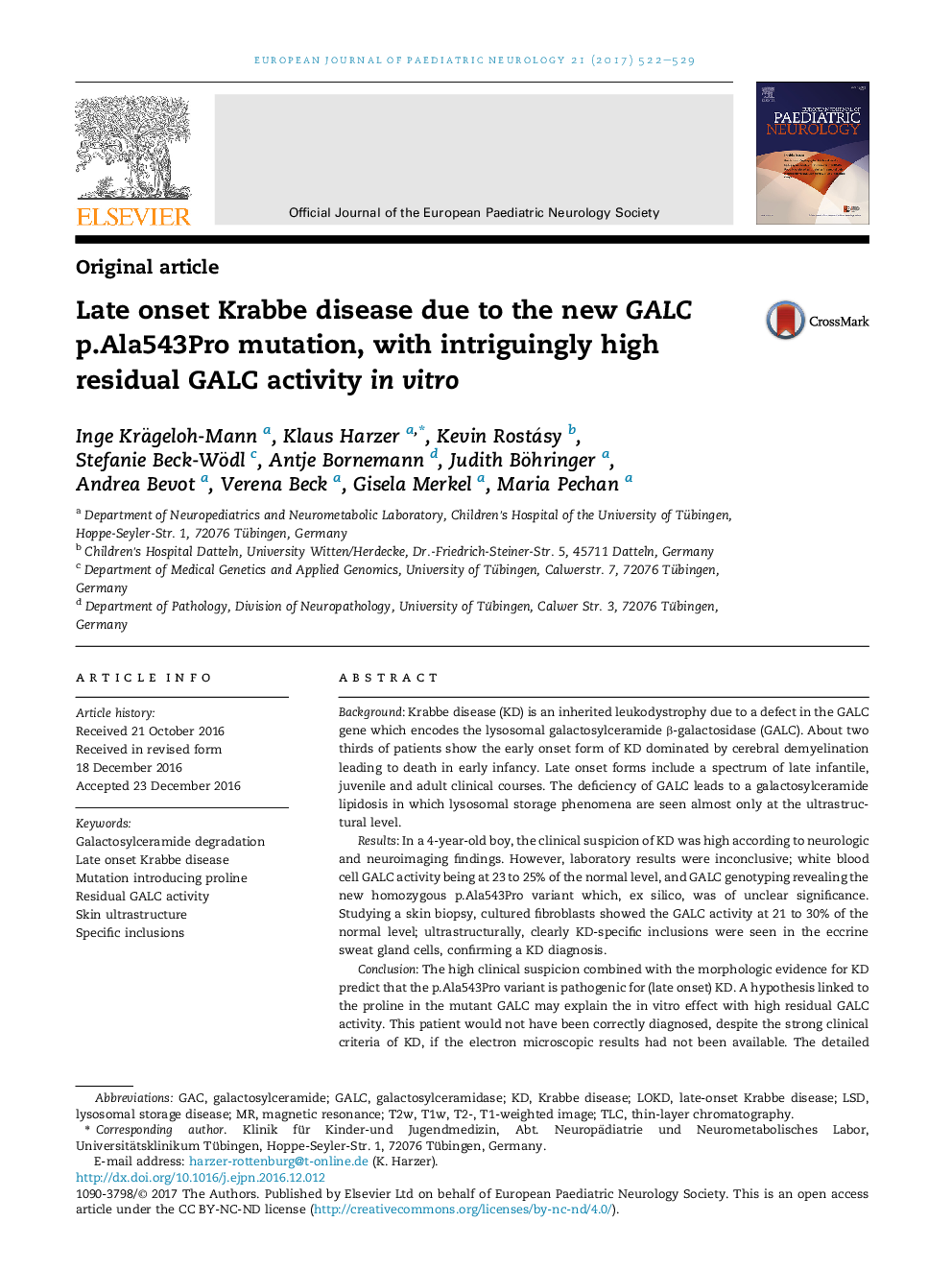| کد مقاله | کد نشریه | سال انتشار | مقاله انگلیسی | نسخه تمام متن |
|---|---|---|---|---|
| 5628885 | 1580000 | 2017 | 8 صفحه PDF | دانلود رایگان |

- Lateinfantile Krabbe.
- 30% residual activity.
- New mutation.
- Skin ultrastructure confirmatory.
Background: Krabbe disease (KD) is an inherited leukodystrophy due to a defect in the GALC gene which encodes the lysosomal galactosylceramide β-galactosidase (GALC). About two thirds of patients show the early onset form of KD dominated by cerebral demyelination leading to death in early infancy. Late onset forms include a spectrum of late infantile, juvenile and adult clinical courses. The deficiency of GALC leads to a galactosylceramide lipidosis in which lysosomal storage phenomena are seen almost only at the ultrastructural level.Results: In a 4-year-old boy, the clinical suspicion of KD was high according to neurologic and neuroimaging findings. However, laboratory results were inconclusive; white blood cell GALC activity being at 23 to 25% of the normal level, and GALC genotyping revealing the new homozygous p.Ala543Pro variant which, ex silico, was of unclear significance. Studying a skin biopsy, cultured fibroblasts showed the GALC activity at 21 to 30% of the normal level; ultrastructurally, clearly KD-specific inclusions were seen in the eccrine sweat gland cells, confirming a KD diagnosis.Conclusion: The high clinical suspicion combined with the morphologic evidence for KD predict that the p.Ala543Pro variant is pathogenic for (late onset) KD. A hypothesis linked to the proline in the mutant GALC may explain the in vitro effect with high residual GALC activity. This patient would not have been correctly diagnosed, despite the strong clinical criteria of KD, if the electron microscopic results had not been available. The detailed knowledge of neurologic and neuroimaging signs is important in diagnostically problematic KD patients in which also an electron microscopic approach can be crucial.
Journal: European Journal of Paediatric Neurology - Volume 21, Issue 3, May 2017, Pages 522-529